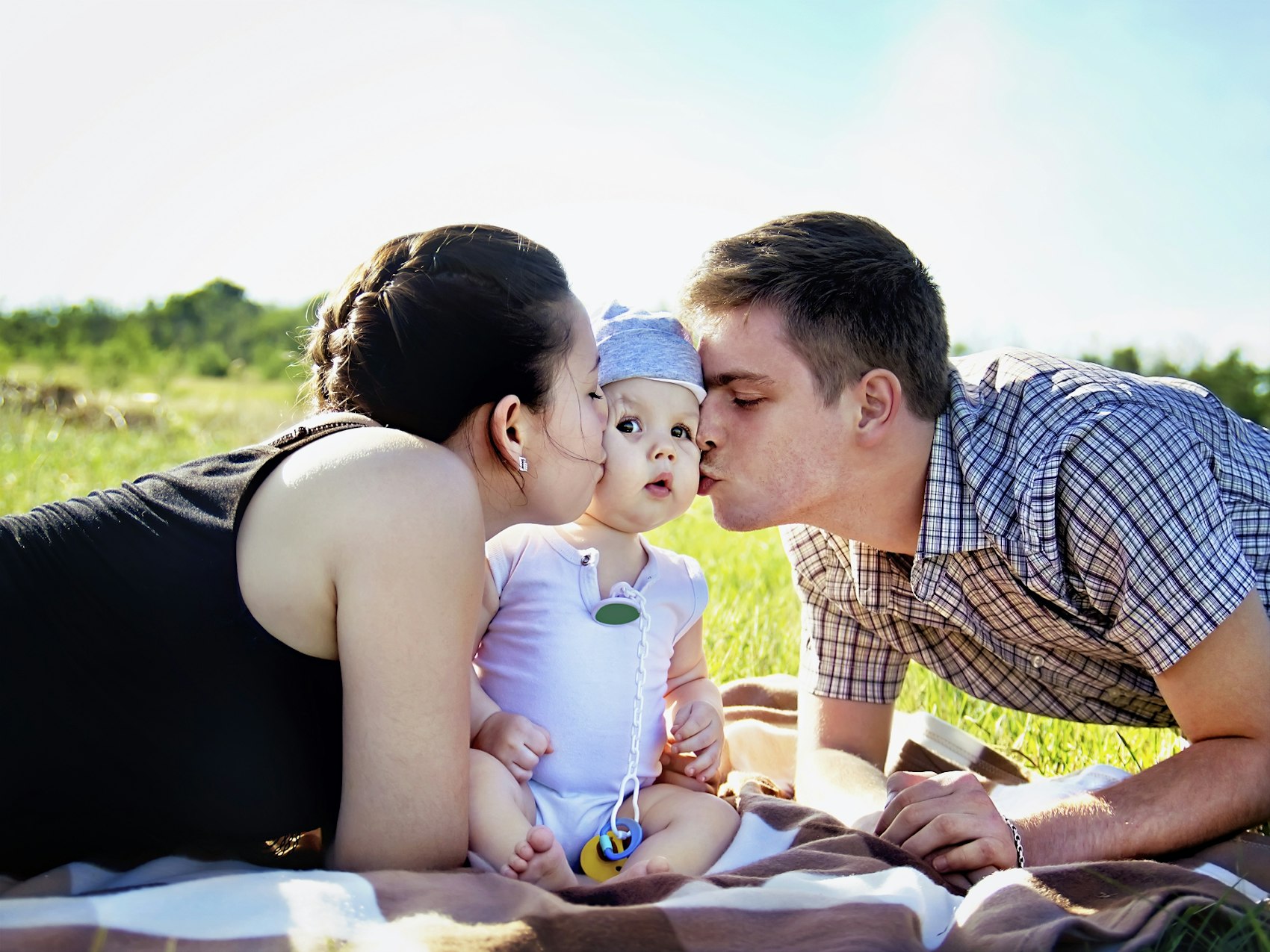Highlights
Parenting doesn’t matter much when it comes to shaping a child’s personality, abilities, and behavior over the long run. That was the startling conclusion embraced by Judith Rich Harris nearly 20 years ago in The Nurture Assumption. And it was one I reflected on frequently while reading two new works, Jonah Lehrer’s A Book About Love and Alison Gopnik’s The Gardener and the Carpenter.
Harris relied largely on findings from the field of behavioral genetics. The traditional studies in this field compare various types of siblings—identical and fraternal twins, adoptive and biological brothers and sisters—to sort the causes of children’s traits into three bins: genes, the shared environment, and the non-shared environment. If identical twins are more similar than fraternal twins, for example, that’s assumed to be genes at work; if adoptive siblings are more similar than random strangers, that’s the shared environment. And if siblings are different even though they’re identical twins reared together, that’s the non-shared environment.
The conscious decisions we make as parents—how strict or supportive we are, whether we send our kids to daycare—should show up as the effect of the shared environment. But Harris reported there was little there. Not much has changed: A massive 2015 research review analyzed “7,804 traits from 2,748 publications,” including millions of twin pairs. For about 70 percent of traits, shared environment didn’t seem to do much at all. By contrast, genes were consistently powerful, typically explaining about half the variation in the traits.
Certainly, there are some nuances here. Parents do affect some important things, including social values and religion, which are, respectively, 27 percent and 35 percent explained by the shared environment. (Educational attainment also has an influence from the shared environment, but it’s not clear whether parenting, parents’ money, or something else is what’s making the difference.) No one denies that severe deprivation hurts kids. And genes and the environment work together in various ways, making the classic three-discrete-bins approach somewhat reductive.
But as a general matter, if parents have a big impact, they must have a different impact on each child, because merely sharing the same house doesn’t seem to make kids much more similar to each other than strangers are. Of those two new books, only one seriously addresses this fact.
A Book About Love
Jonah Lehrer’s A Book About Love is, well, a book about love—mainly in the sense of sacrifice and hard work, not so much the warm cuddly feelings. It isn’t exclusively about parents and children—it also covers marriage and religion—but it argues at length that it matters how well children bond with their caretakers.
Lehrer is right, up to a point. These relationships are important, and the effects are especially clear when they involve separation, neglect, or abuse. He cites one study of Finnish children who were evacuated to foster homes during World War II; they avoided the bombing campaigns witnessed by the kids who stayed, but they were separated from their parents, and they ended up nearly twice as likely to die of cardiovascular disease decades later. Animal research is informative as well—an oft-cited study on rats shows that they grow up cognitively impaired when denied the attention of their mothers while young. And of course, this website has explored in depth the consequences of father absence; there is good evidence that its correlations with bad outcomes are partly causal.
Merely sharing the same house doesn’t seem to make kids much more similar to each other than strangers.
But Lehrer’s discussion of “attachment styles” takes this line of thinking much further. To summarize the idea bluntly: bad parenting causes kids to be “insecurely attached” to their caregivers, which in turn leads them to be much less well-adjusted and successful—in an astonishing variety of ways—when they grow up. Since something like 40 percent of American children aren’t securely attached, this is a very big claim; it covers even modestly below-average parents, not just the extremes.
For young children, attachment styles are measured through the “Strange Situation Test,” where researchers look to see how a child behaves in a room with a parent and a stranger, especially when the parent leaves and comes back. At first, “securely attached” kids explore the room but return to the parent as a “safe base”; they become distressed when the parent leaves, but they are happy again when the parent returns. “Insecure” attachments come in various forms, but they include, as Lehrer writes, “the kids who [don’t] cry when abandoned or [can’t] stop crying when the experiment [is] over.”
These styles correlate with both (A) how sensitive parents are to their kids’ needs at home and (B) children’s outcomes, from social popularity at age 5 to standardized-test scores in the teen years to health at age 32. The attachment theorists’ key inference, which Lehrer hoovers up hook, line, and sinker, is that (A) causes (B).
But that inference does not necessarily follow—and it is also difficult to square with the findings of behavioral genetics. If attachment is merely a function of the parent’s behavior, you would expect it to be part of the “shared environment”: in general, a good parent should be a good parent to all his or her children. But shared environment is exactly what behavioral genetics says isn’t generally important.
Behavioral genetics also forces us to consider alternative explanations for the seeming power of attachment. Maybe parental sensitivity and/or childhood attachment behaviors are genetic, and those same genes contribute to difficulty later in life for the child.
Unfortunately, A Book About Love ignores this possibility—except for one footnote that touches on behavioral-genetics research. In that footnote, Lehrer cites a 2003 twin study finding that a child’s attachment style is, as speculated above, mostly a part of the shared environment. He doesn’t seem to realize the problem, which (again) is that the shared environment in its entirety doesn’t matter much.
But a 2009 literature review blurs the picture. Studies consistently find that children’s attachment behavior isn’t highly genetic (the highest estimate cited is 25 percent; several studies find it to be negligible), but the balance between shared and non-shared environment isn’t settled, and there may be gene-environment interactions as well—meaning that some kids might be genetically more sensitive to the effects of bad parenting.
Perhaps attachment largely goes into the non-shared-environment bin, not the shared-environment one, because parents bond with different kids in different ways. In that case, attachment could powerfully affect kids’ outcomes without contradicting the core findings of behavioral genetics. In one study, nearly one-third of identical twins had different attachment styles, which would seem to buttress this possibility. It’s worth more research, especially considering that therapy can change attachment styles.
What I would like to see is a long-term follow-up to twin studies of attachment. When one identical twin is securely attached and the other is not, does the former twin usually do better in life? I can’t find any research along these lines, and it would not be too surprising if none existed: Few have probed the nexus between attachment styles and genes.
So if that’s a blind spot for A Book About Love, it’s one the book shares with many professional researchers.
The Gardener and the Carpenter
After A Book About Love, psychology professor Alison Gopnik’s The Gardener and the Carpenter is a breath of fresh air. By page 23, there can be no doubt that Gopnik knows the score and won’t try to explain it away:
[I]t is very difficult to find any reliable, empirical relation between the small variations in what parents do—the variations that are the focus of parenting—and the resulting adult traits of their children...From an empirical perspective, parenting is a mug’s game.
Indeed, the central argument of Gopnik’s book is that we should reject the concept of “parenting” entirely. She notes that even the word is a recent invention, having become popular only in the 1970s (though I would add that the concept of “rearing” children, and anxiety about how best to do so, goes back much further). Her title refers to the idea that parents should see themselves not as “carpenters” aiming to craft something specific, but rather as “gardeners,” aiming to help those under their care flourish, knowing full well that nature will determine the finer details.
Much of Gopnik’s book focuses on her own research into how kids learn. Kids really are information sponges, and in some ways, they learn better than adults do. Their brains are actually wired to make fresh connections more easily; unlike the rest of us, they are not stuck in their ways and adamant about their hard-won ideas of how the world works.
But they’re not just sponges. They are surprisingly adept at extracting information from their environment and interpreting it properly. When they imitate adults, they don’t do so thoughtlessly; they think through what the adults were trying to accomplish and try to figure out whether the adults actually knew what they were doing. Through this process, kids learn the traditions of those who came before, but they also challenge those traditions, develop them, and adapt them to new circumstances.
Kids really are information sponges, and in some ways, they learn better than adults do.
If we can’t deliberately mold our children into astronauts or star athletes or even lawyers, then, what we can do is provide an environment ripe for learning and experimentation. Gopnik notes, for instance, that we can provide “scaffolding” for kids’ activities—setting the conditions for “guided play,” such as asking them to sort shapes according to certain rules—and let them explore.
The Gardener and the Carpenter is less impressive when it strays from Gopnik’s areas of expertise, though. Here she is, for example, discussing how public policy could help parents and children:
There is no mystery about the moral advantages or the good practical consequences of policies such as universal prenatal care, home visitors and nurses, paid parental leave for men and women, universal and free preschool, and direct subsidies to parents. These policies really do lead to better outcomes [for] children as a whole—in fact, this is one of the clearest results in all of social science.
“Multiple studies,” she continues, show that they work.
When I chased down the reference for Gopnik’s assertion that this is “one of the clearest results in all of social science,” I ended up with Heckman 2006 and Kirp 2009. Both of these are basically arguments for the value of preschool—the science of which is not, I know from years of following the issue, settled. A big part of the debate is whether universal programs confer (or even plausibly could confer) benefits anything like those seen in small, intense, well-run interventions like Perry Preschool. See Grover Whitehurst of the Brookings Institution for a sober analysis of the evidence on this topic.
That’s not to say these policies are bad, and at any rate, I’m not going to resolve debates about several huge proposals in one article (a double book review at that!). For whatever it’s worth, I’m personally sympathetic to direct subsidies to parents and leery of mandatory paid parental leave. But it was disappointing—after Gopnik’s detailed and thoughtful discussions of her own research, and amid her heroic project to convince parents they’re not going to break their kids—to see her assert so blithely a scientific consensus that does not exist.
***
It was no surprise that The Nurture Assumption was in the back of my mind as I read these titles; to this day, it’s the lens through which I view all claims about parenting. I would also like it to be the foundation of my household’s parenting (or at least child-gardening) philosophy, but for the life of me, I cannot get my wife to read it. She’s already decided our son is going to Northwestern.
I don’t think I’ll be recommending A Book About Love to her. I have a feeling it would make her want to feed our son into some sort of homemade Strange Situation Test so we could see firsthand whether we’re horrible parents. But maybe The Gardener and the Carpenter is a good middle ground for couples like us—realistic about the limits of “parenting,” but respectful of what parents really can bring to the table.
Robert VerBruggen is managing editor of The American Conservative.














